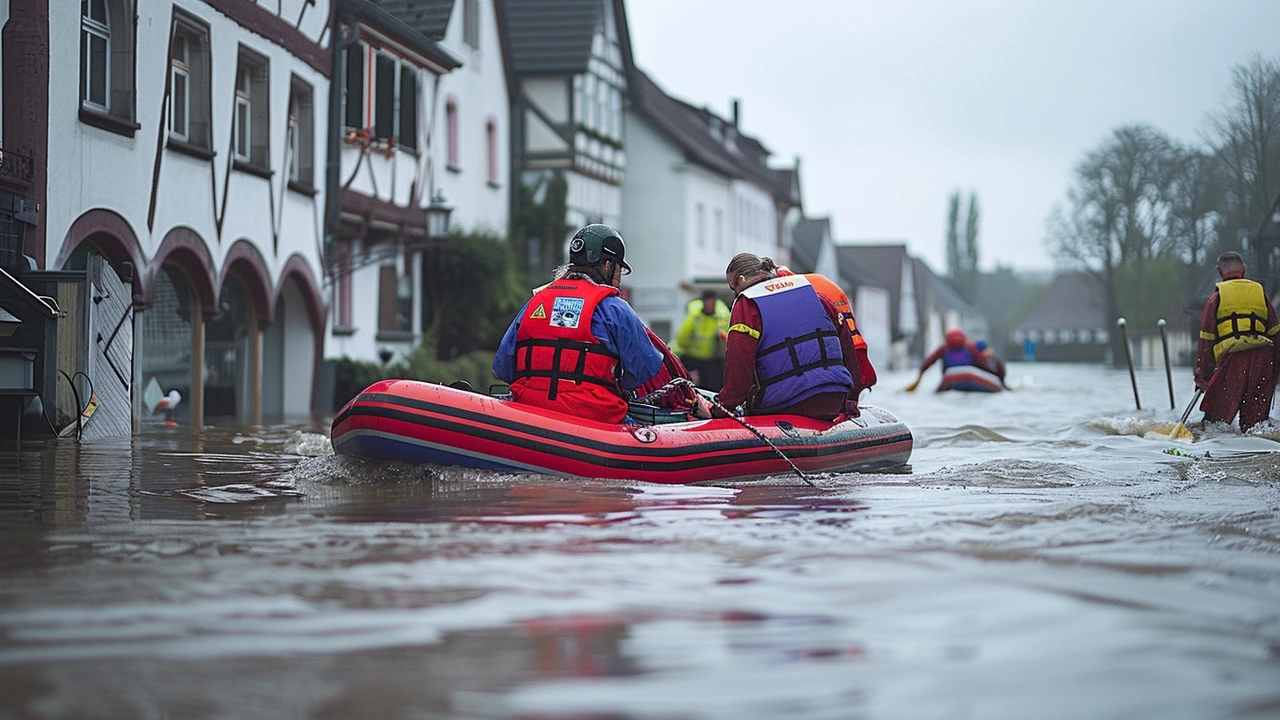Germany Floods – What’s Happening Right Now
If you’ve heard about heavy rains turning streets into rivers across Germany, you’re not alone. The recent downpours have caused rivers to burst their banks in several states, flooding homes, schools and roads. People are scrambling to protect belongings while authorities work around the clock to keep everyone safe.
How the Floods Started
It all began when a slow‑moving low pressure system dumped record rainfall over the Rhine and Elbe basins. The water rose faster than dams could release it, and towns downstream were hit hard within hours. Emergency crews set up barriers, evacuated families and opened shelters to give those displaced a place to stay.
What You Can Do to Stay Safe
If you live in an affected area, the first rule is to listen to local alerts. Turn on weather notifications on your phone and follow instructions from police or fire services. Avoid driving through flooded roads – even shallow water can sweep a car away. Keep an emergency kit ready with bottled water, snacks, a flashlight and important documents.
For those outside the flood zone, you might still feel the impact if power cuts affect your neighborhood. Save energy by unplugging appliances that could be damaged by surges when electricity returns. Check on neighbors, especially older residents, to make sure they have help accessing food or medication.
The German government has launched a relief fund that accepts donations for affected families. Local charities are also organizing food drives and temporary housing. If you want to contribute, look for official websites ending in .de – they’ll list verified ways to give money or supplies.
Want up‑to‑date information without scrolling endless feeds? Follow the German Meteorological Service (DWD) on social media or subscribe to their SMS alerts. They post real‑time river levels, road closures and safety advice in clear language.
Historically, Germany has faced major floods every few decades – think of the 2002 Elbe flood that caused billions in damage. Lessons from those events have improved warning systems, but extreme weather is getting more intense, so staying prepared is smarter than ever.
Bottom line: the situation is serious but not hopeless. Communities are pulling together, emergency teams are on the ground and help is flowing in. Stay informed, follow safety tips, and you’ll be ready to handle whatever comes next.

Deadly Floods Devastate Southern Germany, Highlight Climate Change Risks
Jun 4, 2024 / 18 Comments
Severe floods in southern Germany, caused by torrential rains, have resulted in four deaths and forced thousands to leave their homes. The disaster has hit the regions of Bavaria and Baden-Wuerttemberg the hardest, prompting urgent evacuations and spotlighting climate change ramifications.
READ MORERECENT POSTS
- Singham re-release: Kajal Aggarwal didn’t see the juggernaut coming as Rohit Shetty’s cop universe roars back
- James McAtee joins Nottingham Forest, dashing Dortmund & Leipzig hopes
- SASSA raises social grants April 2025, SRD relief stays at R370
- Thunder Edge Rockets 125-124 in Double‑OT Opening Night Thriller
- Empire City Casino Receives Prestigious Community Service Award for Local Impact
